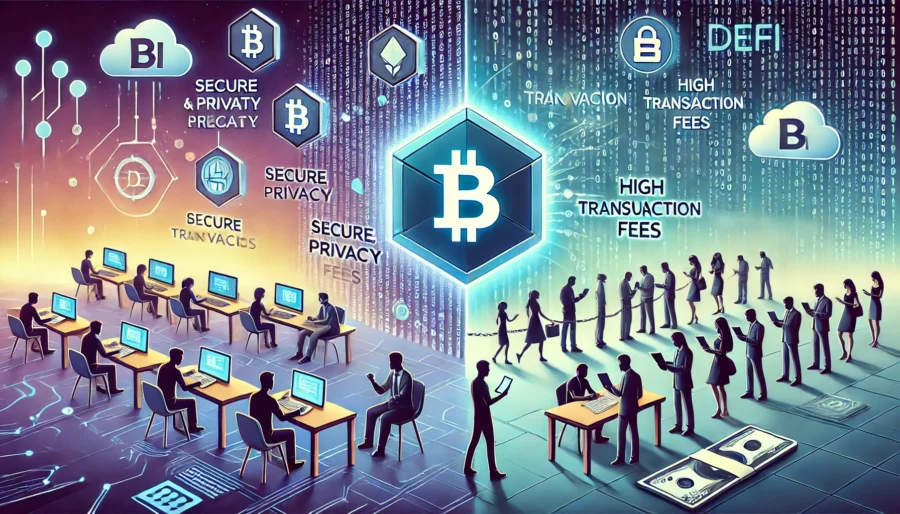Decentralized Finance (DeFi) is rapidly transforming the financial landscape by offering innovative alternatives to traditional financial services. One area poised for significant disruption is peer-to-peer (P2P) lending. DeFi introduces enhanced privacy features and decentralized mechanisms that can fundamentally change how P2P lending operates. This article explores the potential impacts of DeFi on traditional P2P lending practices, particularly with the advent of enhanced privacy protocols.
The Current State of Traditional Peer-to-Peer Lending
Traditional P2P lending platforms connect borrowers directly with lenders, bypassing traditional banks. These platforms, such as LendingClub and Prosper, offer benefits like lower interest rates for borrowers and higher returns for lenders. However, they also have several limitations:
- Centralized Control: Traditional P2P platforms are centralized, meaning they have control over user data and transaction processes.
- Privacy Concerns: User data is often exposed to multiple parties, raising significant privacy issues.
- High Fees: Centralized platforms often charge significant fees for facilitating transactions.
- Geographical Restrictions: Access to P2P lending services can be limited by regional regulations.
DeFi and Enhanced Privacy in P2P Lending
DeFi platforms leverage blockchain technology to decentralize financial services, removing the need for intermediaries. Enhanced privacy features, such as zero-knowledge proofs and advanced cryptographic techniques, further secure user data and transactions. Here’s how DeFi and enhanced privacy can impact traditional P2P lending:
- Increased Privacy and Security
DeFi platforms use cryptographic protocols to ensure that transactions are private and secure. Enhanced privacy mechanisms, such as zk-SNARKs (zero-knowledge succinct non-interactive arguments of knowledge), allow for transactions to be verified without revealing sensitive information. This ensures that borrowers and lenders can conduct transactions without exposing their identities or financial details to third parties.
- Decentralization and Control
By decentralizing the lending process, DeFi platforms remove the need for a central authority. This means that borrowers and lenders retain greater control over their data and funds. Smart contracts automate the lending process, ensuring that terms are met without requiring an intermediary, thereby reducing the risk of fraud and enhancing trust between parties.
- Lower Fees
Without intermediaries, DeFi platforms can offer significantly lower fees compared to traditional P2P lending platforms. This is particularly beneficial for borrowers, who can access loans at lower costs, and for lenders, who can enjoy higher returns on their investments.
- Global Accessibility
DeFi platforms are inherently borderless, allowing users from around the world to participate in P2P lending. This global accessibility opens up new markets and opportunities for both borrowers and lenders, overcoming geographical restrictions imposed by traditional financial systems.
- Enhanced Transparency
Blockchain technology ensures that all transactions are recorded on a public ledger, providing transparency and traceability. This transparency can help build trust among users, as all transactions are publicly verifiable, reducing the likelihood of disputes.
- Flexible Lending Models
DeFi enables the creation of more flexible and innovative lending models. For example, some DeFi platforms allow for over-collateralized loans, where borrowers can receive loans based on the value of their crypto assets. Additionally, DeFi protocols can offer variable interest rates based on supply and demand dynamics, providing more tailored lending solutions.
Challenges and Considerations
While DeFi offers numerous advantages, there are also challenges to consider:
- Regulatory Uncertainty: DeFi operates in a relatively new and evolving regulatory environment. Compliance with local and international regulations can be complex.
- Technical Risks: Smart contracts, while secure, are not immune to bugs or vulnerabilities. Ensuring robust code and conducting regular audits are essential to prevent exploits.
- Adoption Barriers: The general public may be hesitant to adopt DeFi due to a lack of understanding or familiarity with blockchain technology.
Conclusion
DeFi has the potential to revolutionize traditional P2P lending by offering enhanced privacy, reduced costs, greater control, and global accessibility. As blockchain technology and privacy protocols continue to advance, DeFi platforms will likely become more sophisticated, providing even more secure and efficient lending solutions. Embracing these innovations can lead to a more inclusive and decentralized financial ecosystem, benefiting borrowers and lenders alike.





